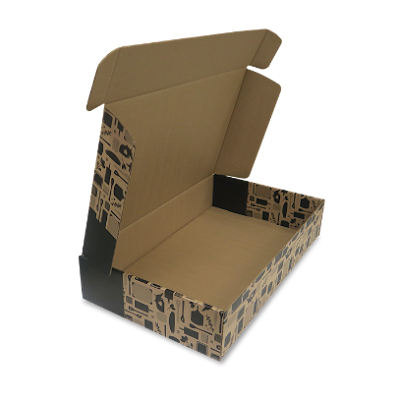Printed cardboard boxes have become integral to the modern packaging landscape, offering a versatile and sustainable solution for businesses across various industries. From their humble origins to the present day, these boxes have undergone a remarkable evolution, combining functionality with aesthetic appeal. This article delves into the world of printed cardboard boxes, exploring their history, manufacturing processes, environmental impact, and the role they play in contemporary packaging.
Historical Roots of Printed Cardboard Boxes
The origins of cardboard boxes can be traced back to the early 19th century when the first patent for a cardboard box was registered in England. Initially used for the packaging of hats and lightweight goods, the simple cardboard box laid the foundation for a packaging revolution. Over time, the integration of printing technology onto cardboard surfaces allowed for customization, paving the way for the printed cardboard boxes we know today.
Manufacturing Processes and Printing Techniques
Cardboard Production Cardboard, primarily made from paper pulp, is an eco-friendly and renewable resource. The manufacturing process involves pulping wood fibers, which are then pressed and bonded to create sturdy sheets of cardboard. The thickness and composition of these sheets can be tailored to meet specific packaging requirements.
Printing Technologies The ability to print on cardboard surfaces has significantly enhanced the functionality and visual appeal of cardboard boxes. Various printing techniques, such as flexography, offset printing, and digital printing, are employed based on factors like order quantity, design complexity, and cost considerations. This flexibility allows businesses to create eye-catching packaging that serves both functional and branding purposes.
Functional Advantages of Printed Cardboard Boxes
Lightweight and Sturdy Printed cardboard boxes strike a balance between being lightweight and robust, making them ideal for shipping and storage. Their structural integrity ensures the protection of goods during transit, reducing the likelihood of damage.
Branding and Customization The ability to print logos, graphics, and product information on cardboard boxes provides businesses with a powerful branding tool. Consistent and appealing packaging not only protects the product but also enhances brand recognition and consumer engagement.
Sustainability in Focus
Eco-Friendly Material One of the key advantages of printed cardboard boxes is their sustainability. Cardboard is derived from a renewable resource—trees—and is biodegradable. Unlike plastic packaging, cardboard boxes contribute less to environmental pollution and are widely accepted in recycling programs.
Recyclability and Biodegradability The recyclability of cardboard is a significant environmental benefit. Many local recycling facilities accept cardboard, and recycled cardboard can be used to create new boxes or other paper products. Additionally, the biodegradability of cardboard ensures that, even if not recycled, it poses minimal long-term harm to the environment.
Evolving Trends in Printed Cardboard Boxes
E-commerce Boom The rise of e-commerce has led to an increased demand for secure and visually appealing packaging. Printed cardboard boxes play a crucial role in this context, offering a canvas for branding and product information. The unboxing experience has become a vital element in online retail, driving the demand for creatively designed packaging.
Innovations in Printing Technology Advancements in printing technology continue to influence the design capabilities of printed cardboard boxes. High-definition printing, specialty inks, and finishes contribute to creating visually striking packaging. Augmented reality integration and interactive packaging experiences are emerging trends that enhance consumer engagement.
Sustainable Packaging Initiatives As environmental awareness grows, businesses are increasingly adopting sustainable packaging practices. Printed cardboard boxes, with their eco-friendly attributes, are at the forefront of this movement. Brands are actively communicating their commitment to sustainability through packaging, aligning with consumer values.
Challenges and Solutions
Cost Considerations While printed cardboard boxes offer numerous benefits, cost considerations can be a challenge for some businesses. However, economies of scale, technological advancements, and the potential for increased brand visibility often justify the initial investment in customized packaging.
Regulatory Compliance Adhering to packaging regulations and standards is crucial for businesses utilizing printed cardboard boxes. Ensuring compliance with material sourcing, recycling symbols, and other legal requirements demands diligence. Collaboration within the industry and adherence to clear regulatory frameworks can help address these challenges.
Conclusion
Printed cardboard boxes have transcended their basic role as containers to become powerful tools for branding, communication, and sustainability. Their evolution from simple cardboard boxes to customized, printed solutions mirrors the changing needs of businesses and consumers alike. As the packaging industry continues to prioritize sustainability and innovation, printed cardboard boxes are poised to remain at the forefront, embodying a harmonious blend of functionality, creativity, and environmental responsibility.

.jpg)

